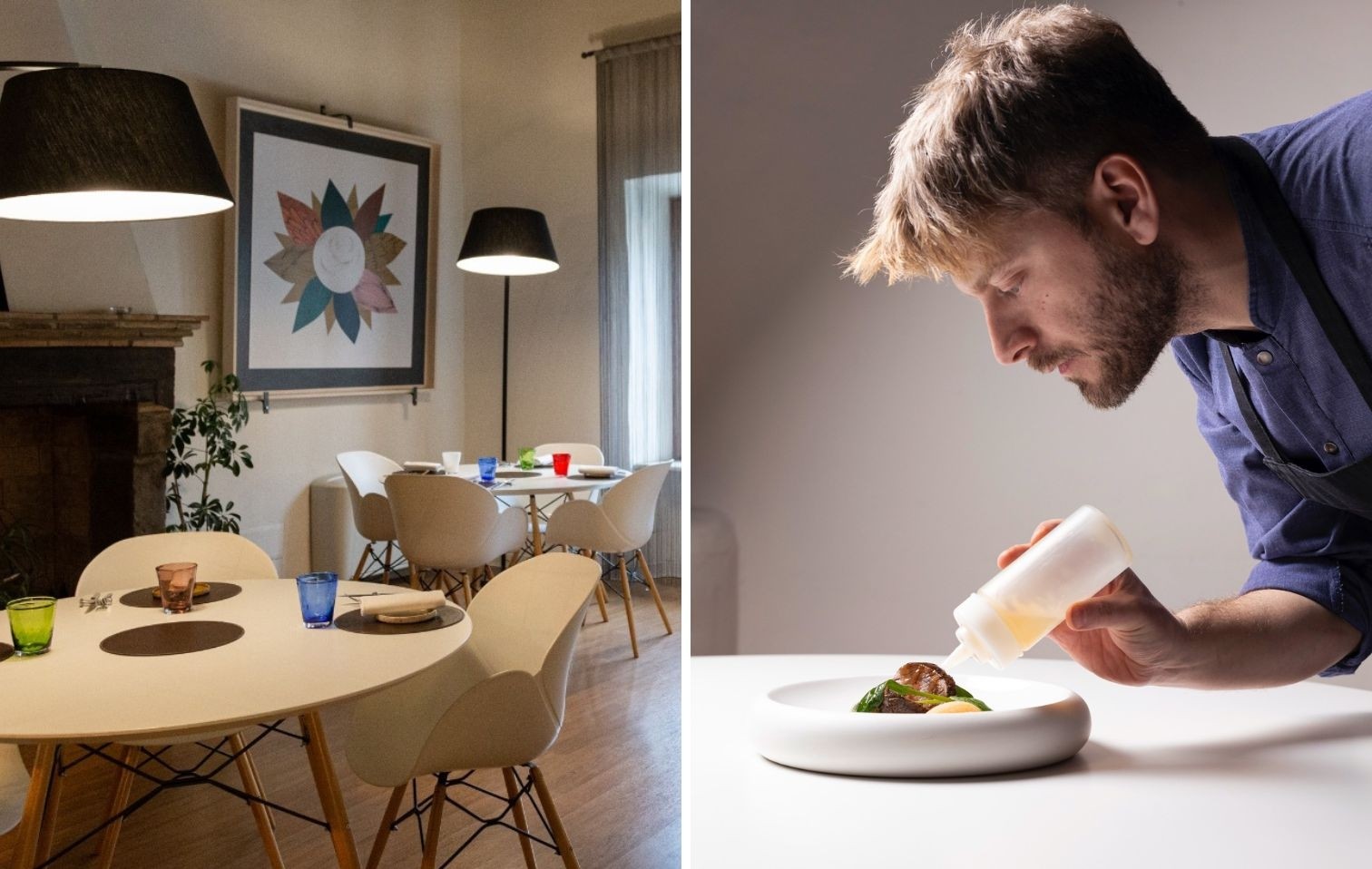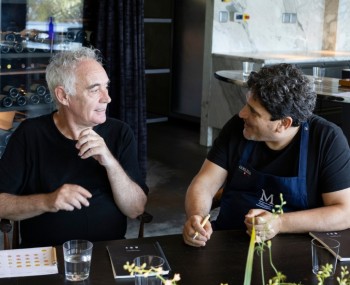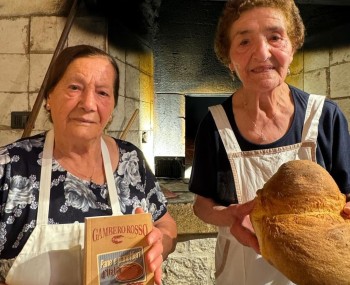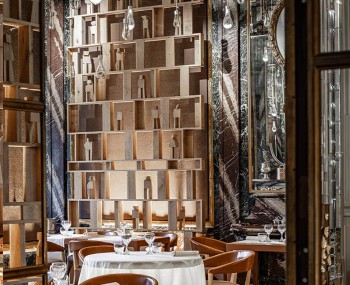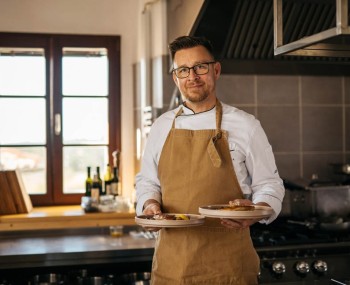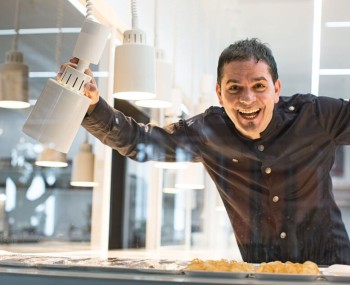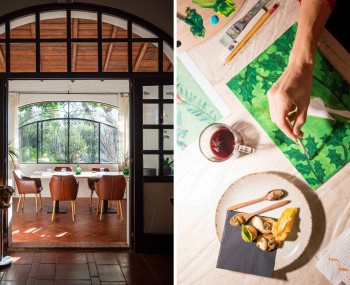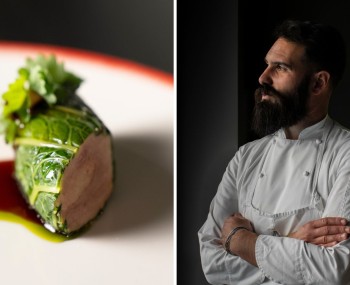A unique room, a well-conceived wine list and a kitchen free of superstructure. All in Canepina, a Tuscia village of under 3,000 inhabitants.
The restaurant and the chef
It is impossible not to fall in love with Tuscia Viterbese and its many beautiful corners: little Canepina, a small town in Monti Cimini amidst wonderful chestnut groves, is where Tiberio Proietti grew up. His story is not exactly the typical one of a cook; although, as he tells us smilingly, “I believe I was born a cook, but without knowing it. My father worked at the university but always cooked as an enthusiast: he even built himself a wood-fired pizza oven. My grandparents, on the other hand, had a butcher's shop: in the same building they had a small workshop in the garage, where they made sausage: there I grew up with the intense smell of ground pepper and I often helped with the gutting too. I always liked being with my hands in the dough, and when you grow up with these people around, it's hard not to be attracted to those situations. Then, moving on, I always continued to cook at home, for friends."
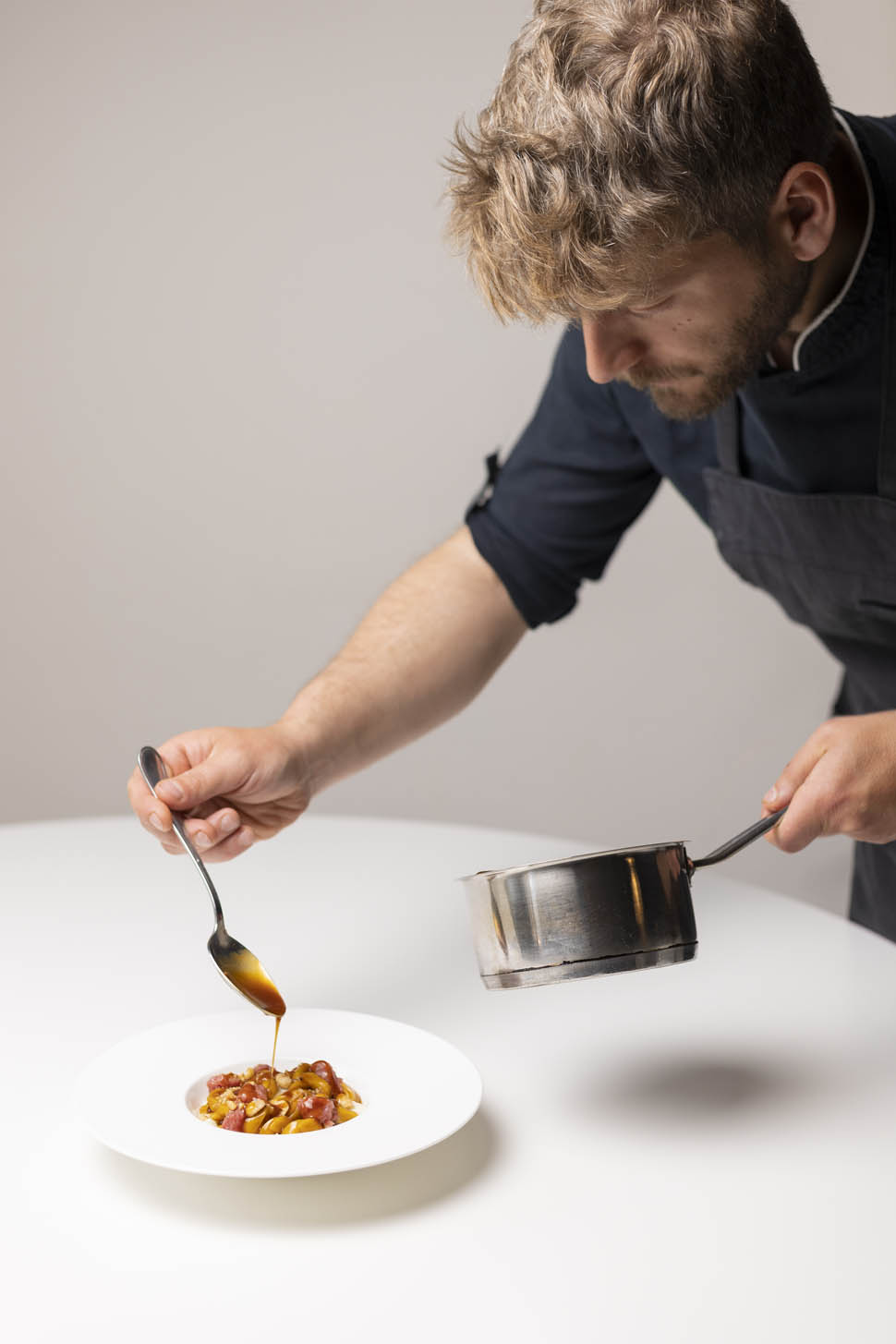
In fact, Tiberio graduated as a land surveyor and then attended the Faculty of Architecture in Rome: “I worked in my uncle's interior design studio while I was studying, but I had to drop out at the three-year mark because Dad passed away. With him there was always in the air the idea of doing something on a restaurant level in the middle of our chestnut groves: we didn't know in what form but something had to be born in that place." It hasn't happened, at least not yet, because the dream remains, but at some point in his life, around the age of 21, Tiberio, born in 1986, began to think seriously about cooking as a professional outlet: “My uncles pushed me to take a course in Terni. It was a simple thing, and there I realized that in three months you don't learn how to cook, but it was something that really attracted me. So I did a small internship with Iside de Cesare. She had immediately seen something special in me and asked me to stay with her.”
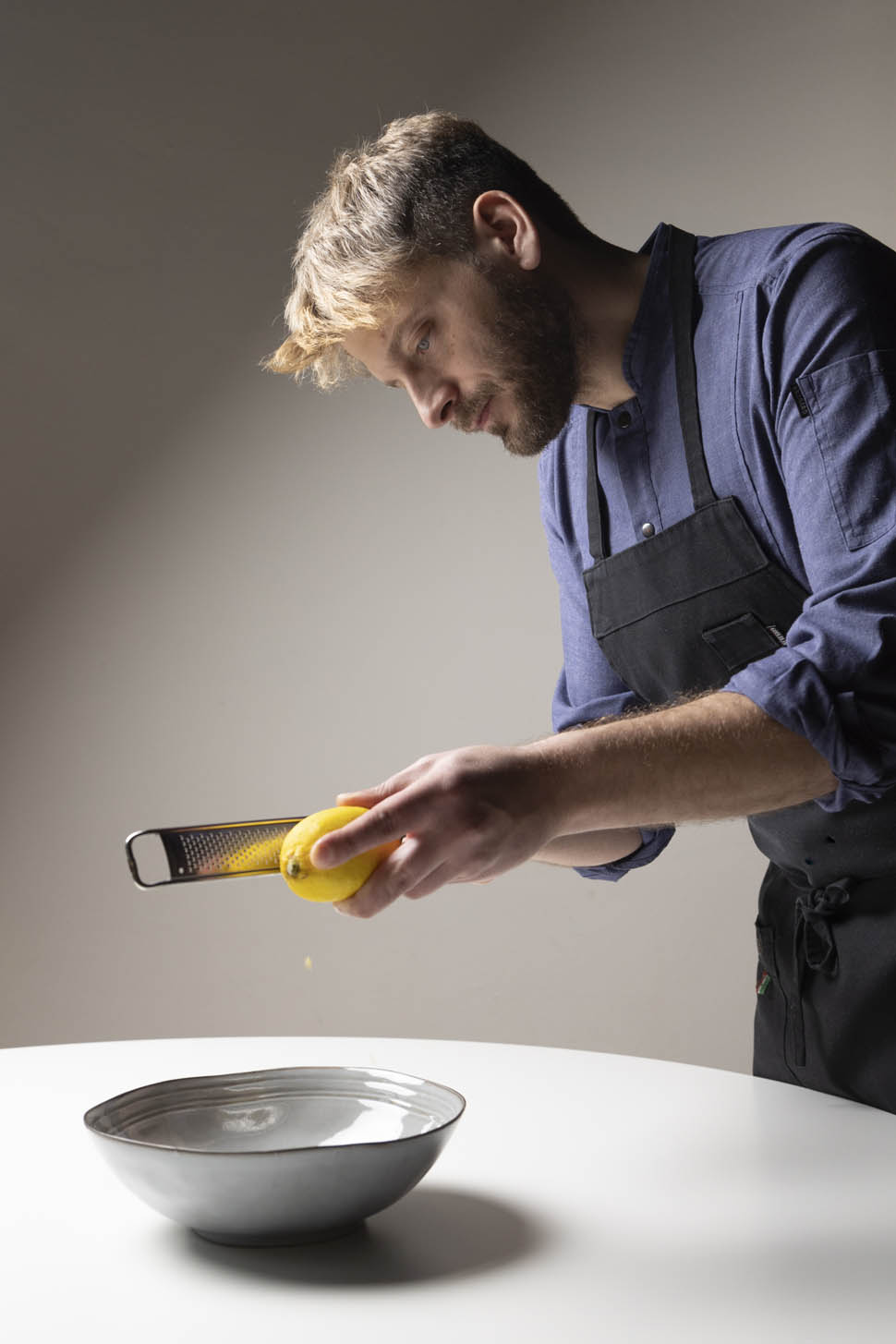
What happens then is that Proietti gets an opportunity that he jumps at without a second thought: "There was this restaurant called Vignale Vino e Musica, it was a retail outlet, an old winery of a local farm that produced wine in bulk. It had had two failed managements and the owners asked me if I wanted to take it over: without even realizing what I was going to do I decided and I didn't tell anyone, not even my mother.” He involved his brother Angelo and together they put their hands on the space to make something new and original. “Thanks to my professional background, I physically renovated it myself, with my brother and a worker. I started building the restaurant already having well in mind the idea of the kitchen I was going to make. Iron, tubular elements, and scaffolding supporting exposed floors of old wood-these structures represent a technical modernity that goes to support a cuisine rooted in tradition and territory.
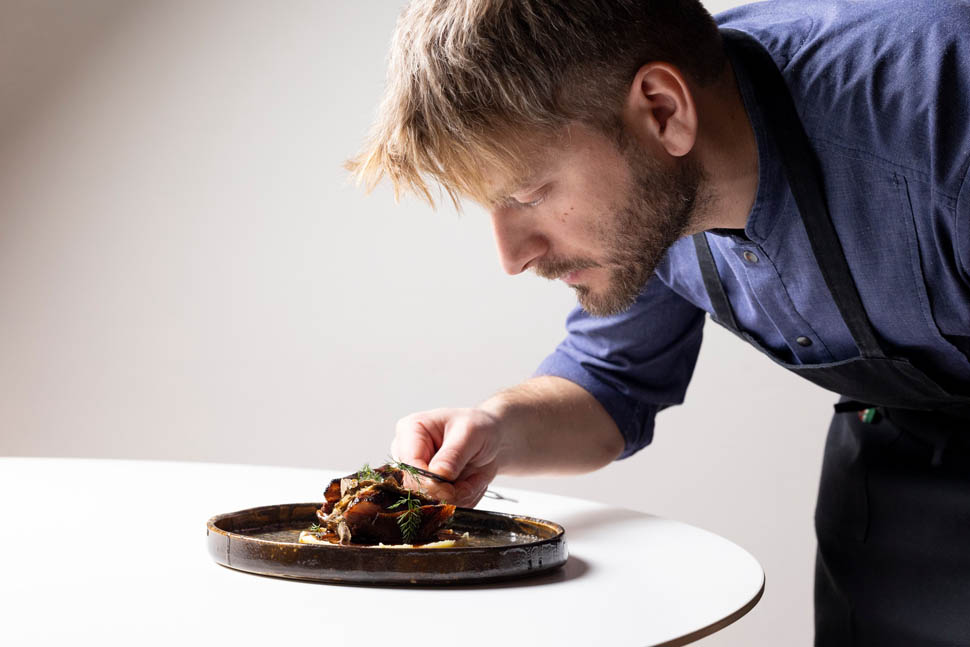
When reading the menu, the dishes are recognizable, without unsettling descriptions or with mind-blowing ingredients that maybe people don't know about." Thus Rosso Vignale was born, after a few months of intense work, on February 14, 2016: a year later came its first recognition, with a hat in the L'Espresso guide. “Initially I didn't really know the world of guides, I ignored their existence, I was naive, but that report moved a lot: on the ground floor we were doing hamburgeria and bistro that in the early days supported the restaurant . Now the situation has turned around." The room, on the second floor, is decidedly sui generis and equally cozy; you can see Tiberio's architect's hand in the details and in the mingling of pipes, joints and bolts with the building's ancient walls. On the ground floor is the beautiful original wine cellar, carved out of tuff, and a space that serves as a bistro, aperitif area, and after-dinner area.
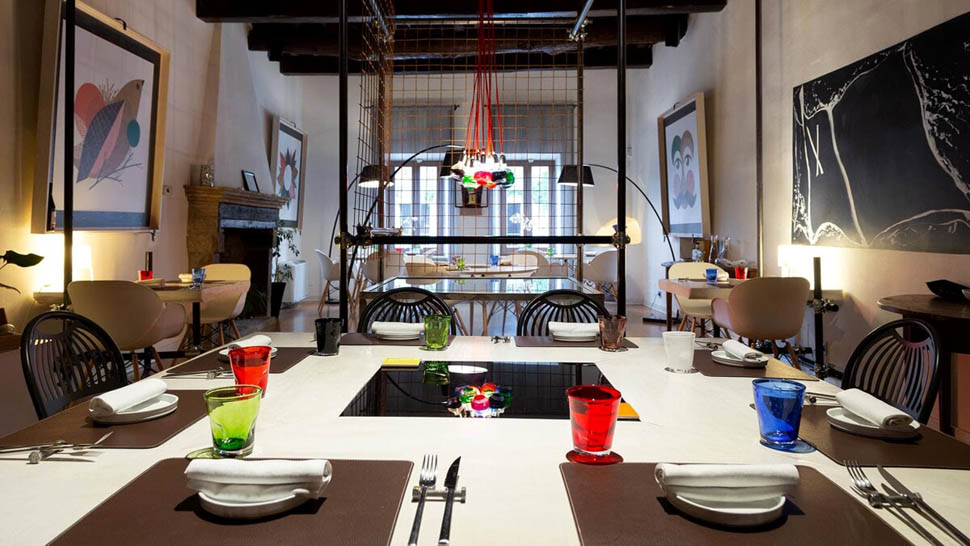
Two women lead the way in the dining room, manager Alexandra Dreghici and Chiara Colonna, a sommelier who manages a well-conceived wine list. The dishes reflect a clear approach: the cuisine must be understandable and free. Drawing from a post published by Tiberio one can read, “Comprehensible: the focus has always been one, to bring the now overused term ‘fine dining’ to a level that is unbrainy, clear and direct. Which does not mean, by any means, simple: touching recognizable dishes with a different hand from the ordinary and with a strong emotional impact, becomes an arduous task because they are always challenged by the people who keep the memory of them. Free: my only purpose has always been to cook for people. No fashion to follow and no one to chase. I was a young man, with his mistakes and “whims” now I am a young man (not so young), who has paid dearly for his freedom. Here, I think this is the moment of highest professional expression for me since I started on this path. I am not referring to dishes, techniques, textures or anything else, but to the feeling of well-being I get every time a course comes out of the kitchen and the smiles of the people around me."
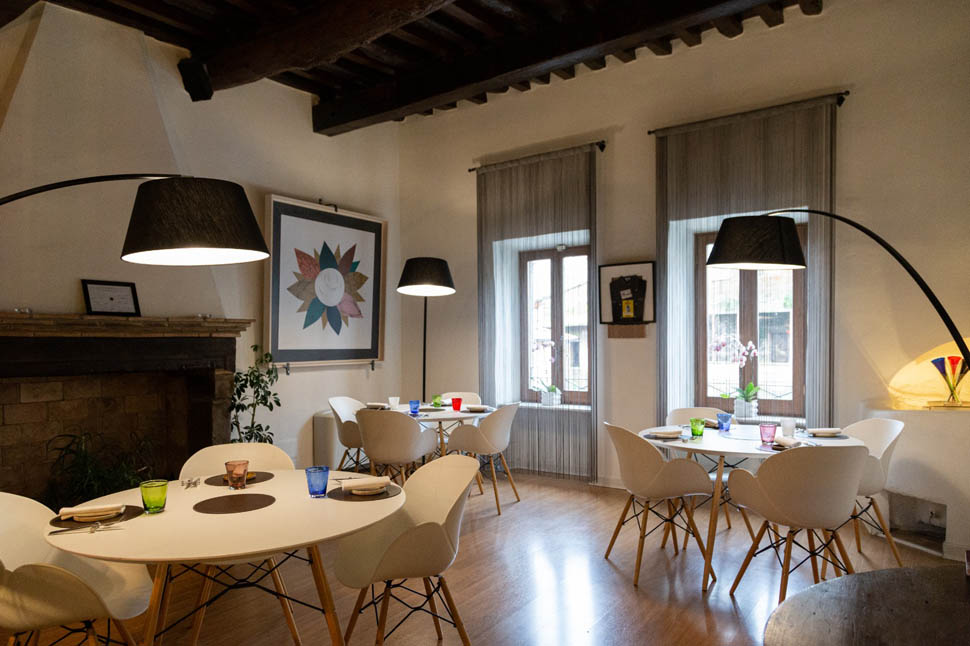
The Dishes
We eat well, at Rosso Vignale, starting with the interpretation of the Italian-style aperitivo in which the fried potato rôsti instead of chips and the tomato & oregano sorbet that takes the place of a pizzetta stand out. Good stuff on the bakery front as well, with the delicious mint breadsticks and the excellent durum wheat semolina-based pagnottina. The gluttonous course begins with the roast beef of Maremmana heifer, muma tonnata and raspberries from Monti Cimini: not yet another disguised version of vitello tonnato; the meat is first browned and roasted in the oven with sprigs of bay leaf, rosemary and fennel.
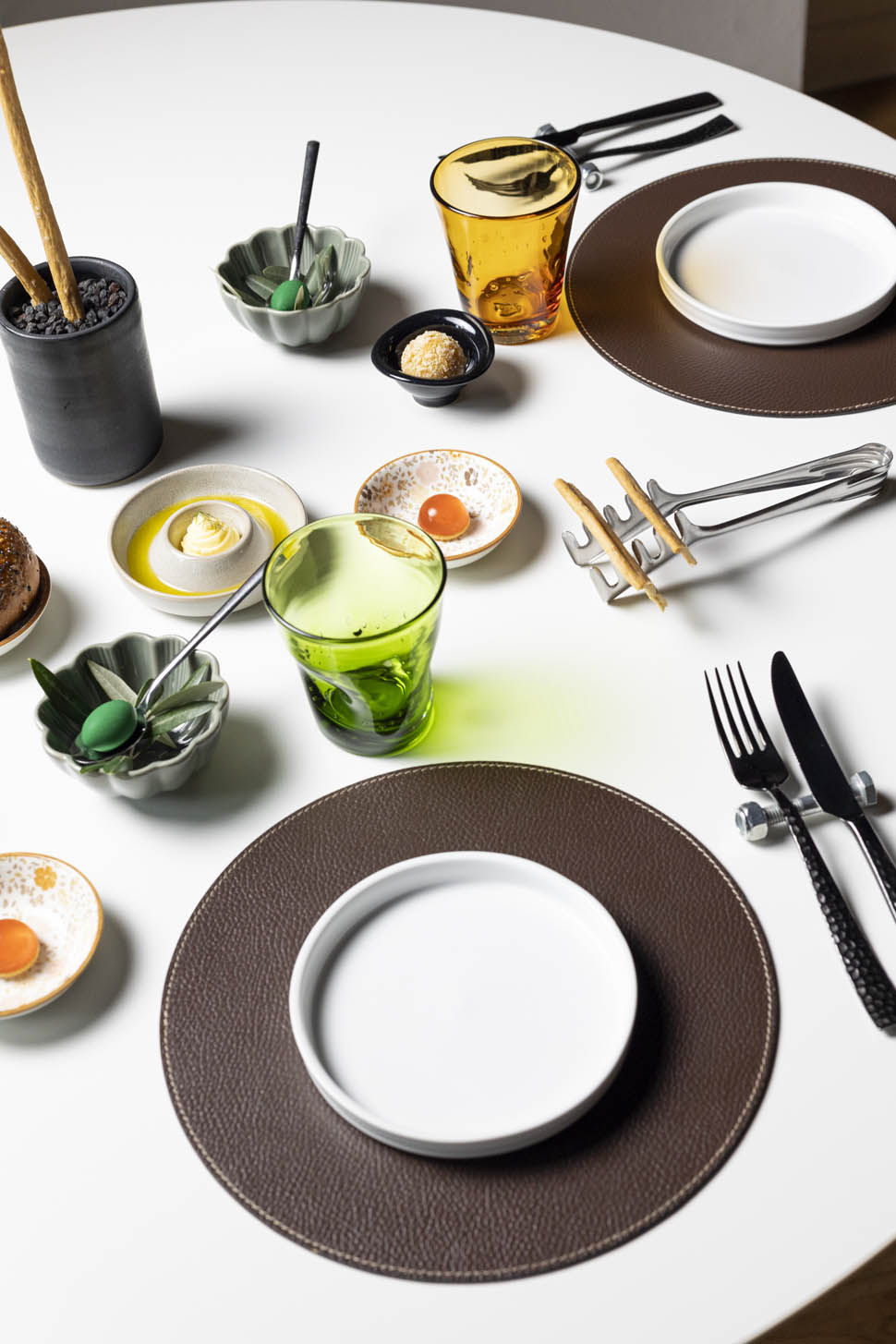
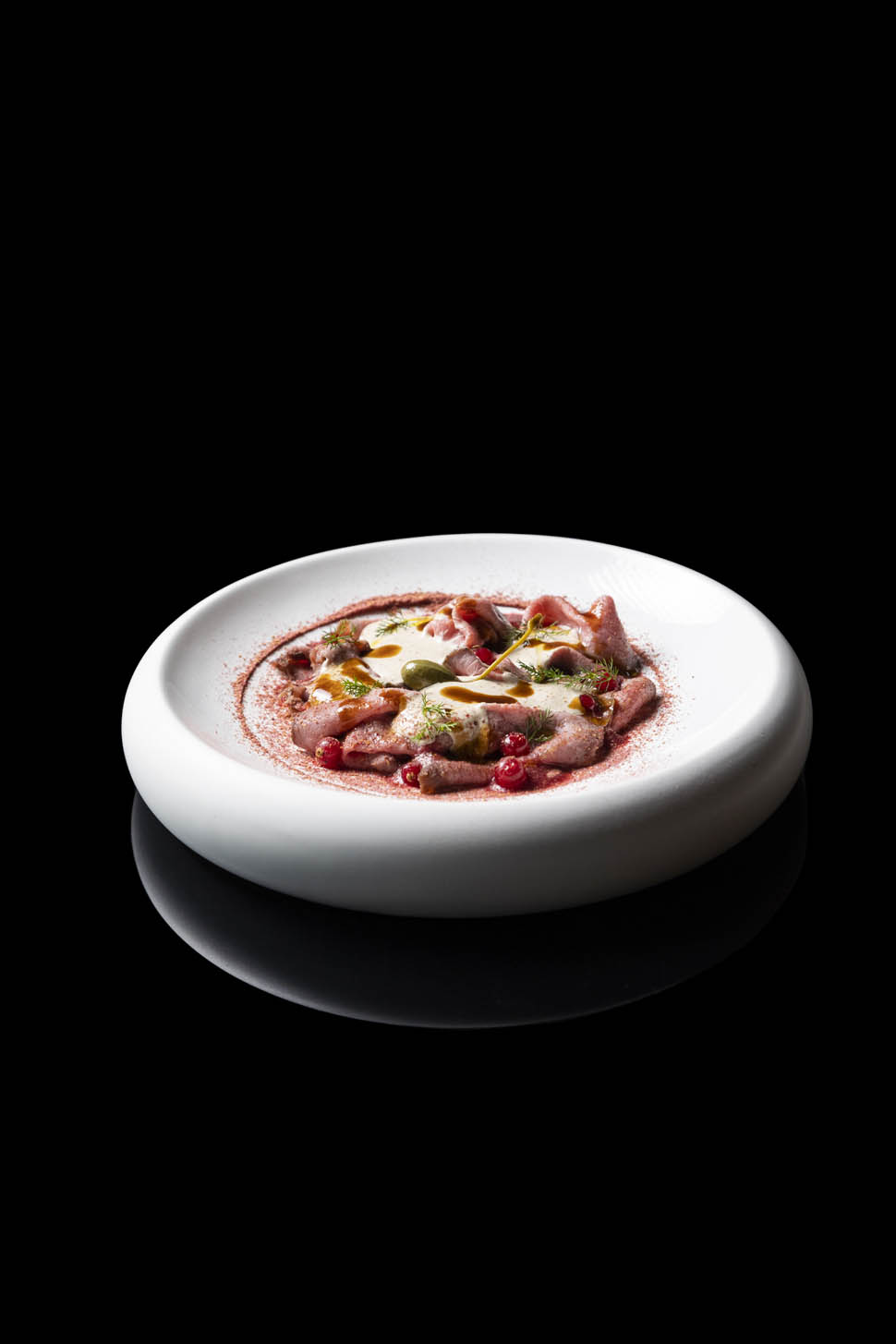
It rests for a couple of days in a vacuum with its fragrant oils and is served in warm carpaccio with a muma tonnata and its own cooking sauce, with the fresh touch of the local raspberry powder and the savory, crunchy note of cucunci. The "girasoli ripieni di coda alla vaccinara", with beef jus, Grana Padano and lemon zeste, are very good : this fresh stuffed pasta is cooked half in water and half in the jus, resulting in a gorgeously delicious result.
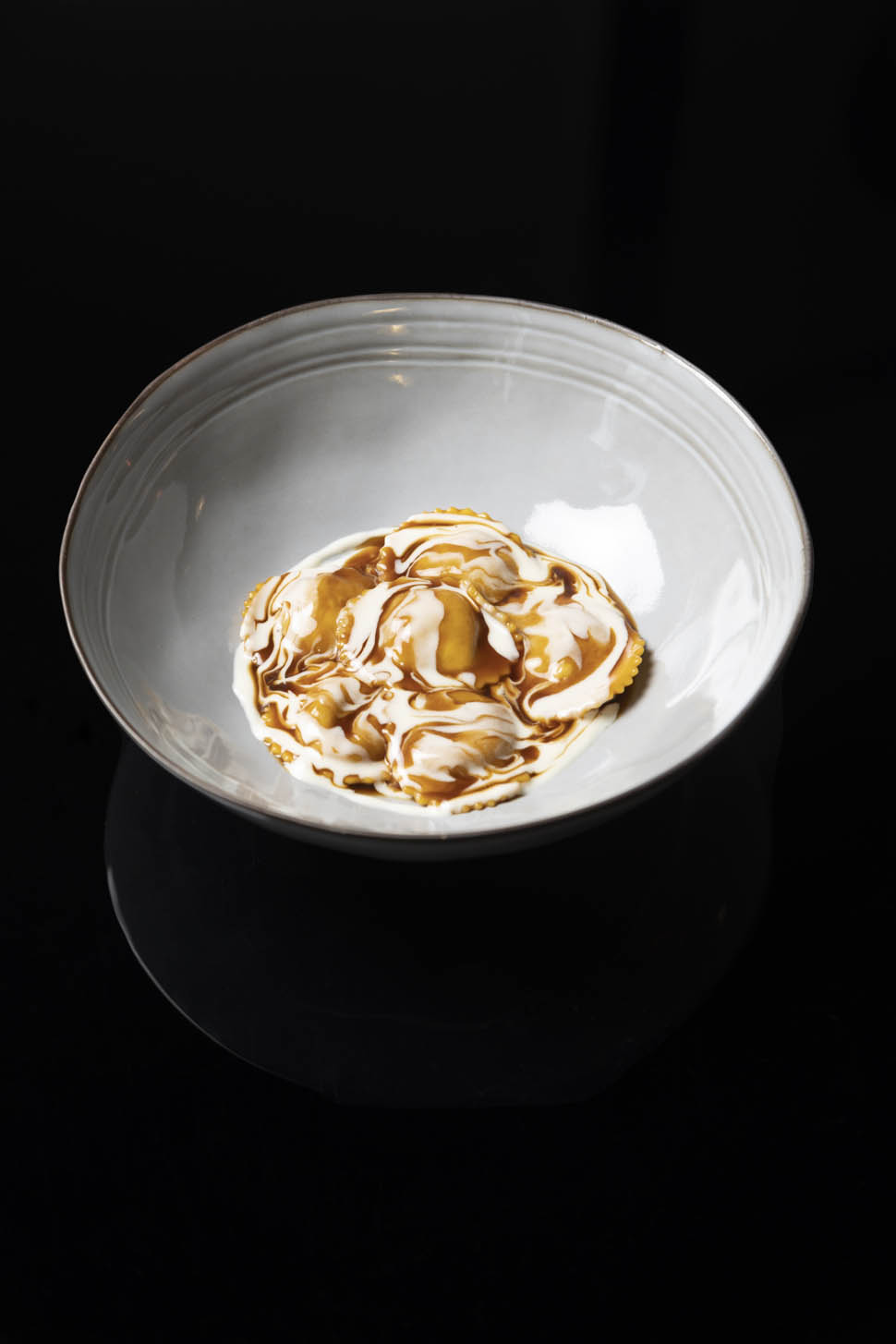
Also notable are the canepinesi ceciliani, cacio, pepe & romanesco: also called 'gnocchi col ferro,' they are stretched with a ferretto, little iron stick, and become a sort of long fusillo pierced on the inside: the addition of the Roman broccoli gives a nice sweet earthy balance to the savoriness of the cheese, and the florets give additional crunch. More beautiful flavors, intense and mouthwatering, come from the barbecued Cinta Senese neck, sweet and sour chamomile onions, rosemary and purple fig: the meat spends two days in a brine of water and sugar, rests for another 24 hours at 2°C; dried, it is vacuum-cooked for 4 hours and re-grilled and served with the spring onions in a vinegar gel flavored with chamomile and rosemary made in an ultrasonic bath, purple fig sorbet and pork bottom. It ends in just the right sweetness with fennel panna cotta with licorice and limoncello.
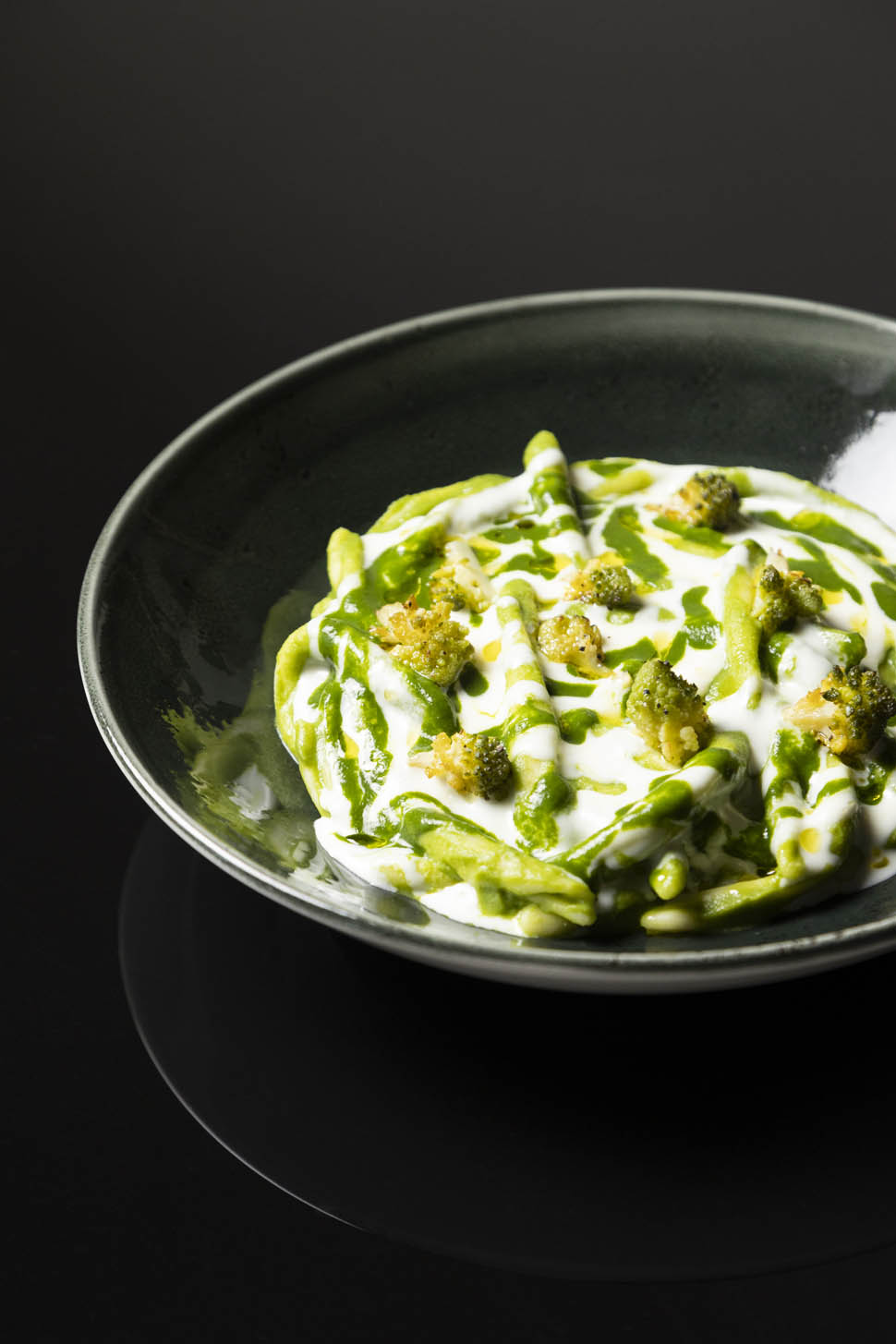
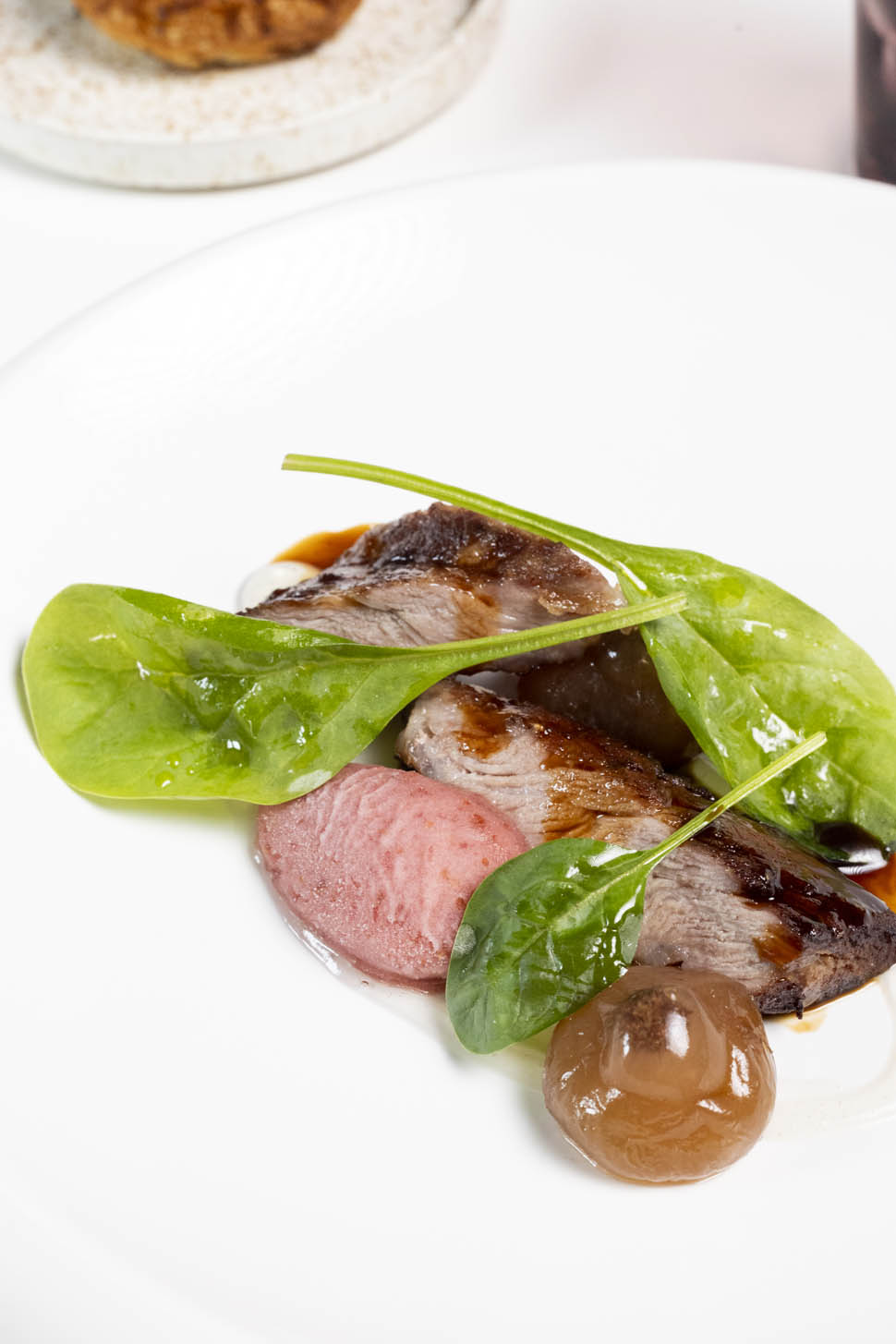
The wild fennel flower grows wild and even around the house of Tiberio there is plenty of it: panna cotta is flavored with it, served with a limoncello ganache, lemon granita, licorice cream, yogurt sponge and lemon cake. A delightful place that does not disappoint.
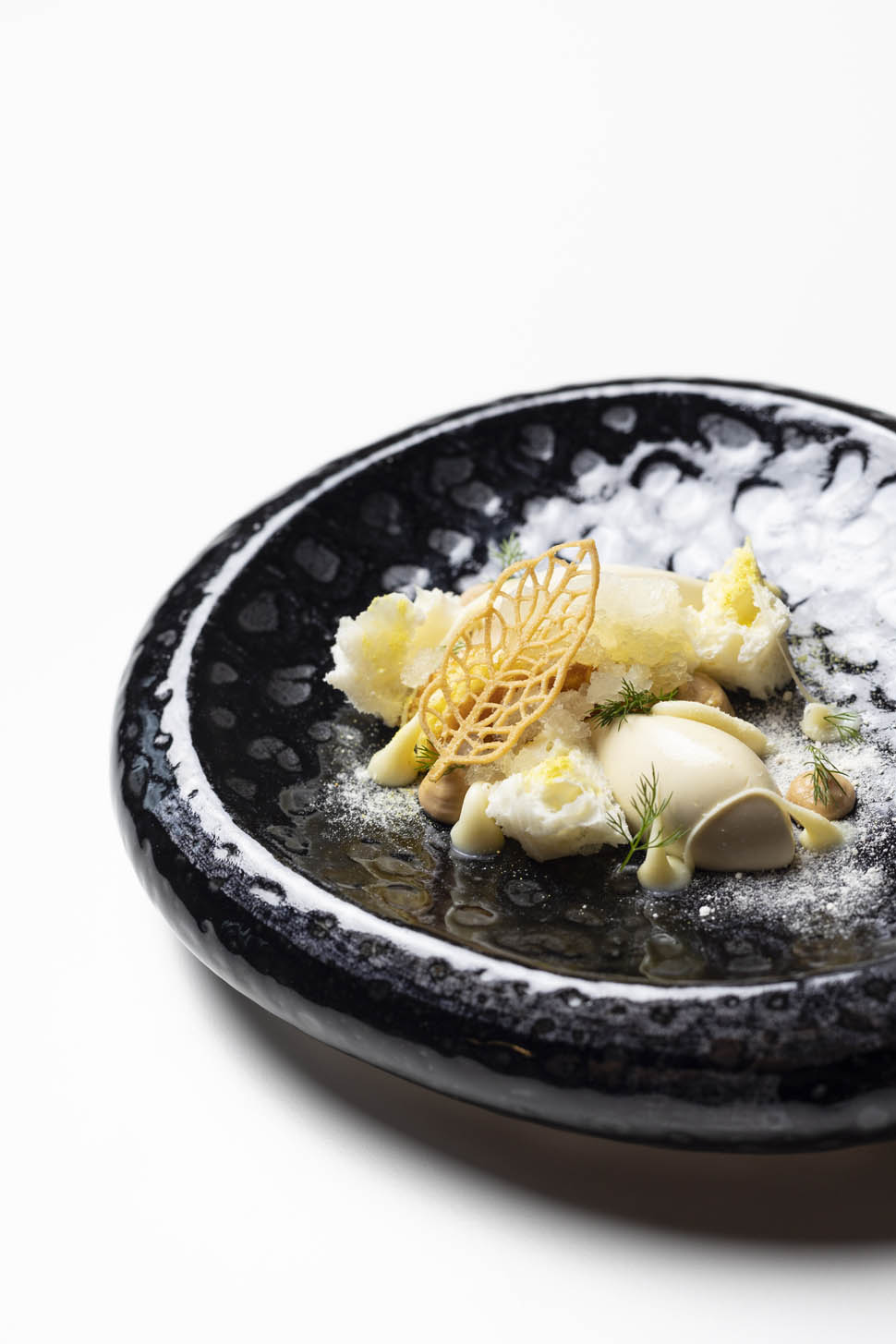
Contact
Rosso Vignale
Piazzale Caduti e Dispersi, 16, 01030 Canepina VT
Phone: 392 446 6246
